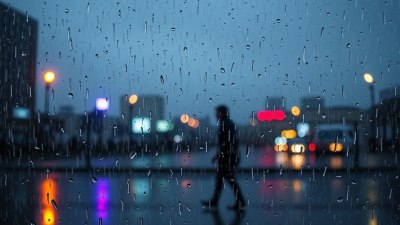How Forecasters Estimate Rainfall Before It Falls
Discover how meteorologists accurately estimate rainfall using technology and data before it reaches the ground.

Understanding how forecasters estimate rainfall before it falls requires a deep dive into meteorological science, cutting-edge technology, and data analysis techniques. Rainfall prediction plays a crucial role in preparing communities, managing water resources, and mitigating natural disasters, making it essential for accurate and timely forecasts.
Forecasters rely on a blend of observational data, numerical weather prediction models, and specialized instruments to estimate rainfall. These methods allow meteorologists to analyze atmospheric conditions, predict rain intensity, duration, and even pinpoint areas likely to experience precipitation.
Observational Tools and Data Collection
Estimating rainfall starts with gathering accurate and real-time data on atmospheric conditions. Meteorologists use a network of weather stations that record variables such as temperature, humidity, wind speed, air pressure, and moisture levels. These parameters help define whether the atmosphere contains enough water vapor to form clouds and generate rainfall.
Remote sensing technologies, like weather radar and satellites, have revolutionized rainfall estimation. Weather radar systems emit radio waves that bounce off raindrops, allowing the radar to measure the intensity and movement of precipitation across large areas. This data helps detect both current rainfall and imminent precipitation, enabling short-term forecasts sometimes referred to as nowcasting.
Satellites, particularly those in geostationary orbit, continuously monitor cloud formations, atmospheric moisture, and temperature profiles. Instruments aboard satellites can detect infrared radiation emitted by clouds, measuring cloud top temperatures, which correlate with the potential for precipitation. Microwave sensors can even estimate atmospheric water vapor content, improving rainfall forecasting accuracy over oceanic and remote regions.
Numerical Weather Prediction Models
While observational data shows current conditions, numerical weather prediction (NWP) models forecast how weather will evolve. These sophisticated computer models simulate the atmosphere's dynamics by solving complex mathematical equations concerning fluid motion, thermodynamics, and moisture processes. Inputting current observational data, these models generate forecasts on rainfall distribution and intensity hours or days ahead.
Global models operate on a coarse grid and produce broad-scale rainfall forecasts, while regional and mesoscale models use finer grids to capture local weather patterns more precisely. Advances in computing power have enabled models to run at resolutions fine enough to predict convective storms—localized downpours often missed by coarser models.
Forecasters continually calibrate these models with real-time observations, using techniques called data assimilation. This process improves model accuracy by correcting errors and updating initial conditions. Ensemble forecasting, involving running multiple model simulations with slightly different starting points, helps quantify uncertainty and generate probability forecasts for rainfall.
Estimating Rainfall Intensity and Accumulation
Quantifying how much rain will fall requires combining model output with radar and satellite data. Radar reflectivity values need to be translated into rainfall rates. Meteorologists use empirical relationships, called Z-R relationships (reflectivity-rainfall rate), derived from observations of raindrop size and distribution. These relationships help convert radar echoes into estimates of rainfall intensity expressed in millimeters or inches per hour.
Cumulative rainfall estimates are then calculated by integrating rainfall rates over time and space. This integration helps predict flooding potential and water availability. Modern forecasting systems produce rainfall accumulation maps, showing expected rainfall totals up to 24-72 hours ahead.
The Role of Atmospheric Soundings and Radiosondes
Additional vertical information about the atmosphere comes from radiosondes—weather balloons equipped with sensors that measure temperature, humidity, and pressure at various altitudes. By providing a vertical profile of the atmosphere, radiosondes help identify layers conducive to condensation and precipitation development.
Forecasters analyze these profiles for stability, moisture content, and wind shear. Parameters like lifted index and convective available potential energy (CAPE) derived from soundings indicate the potential for heavy rainfall and thunderstorms. These insights improve short- and medium-term rainfall forecasts.
Use of Ground-Based Rain Gauges for Verification
To calibrate and validate radar and model estimates, meteorologists utilize ground-based rain gauges that measure actual rainfall amounts at specific locations. While gauges provide precise point measurements, their spatial coverage is limited. Comparing gauge data with radar and model predictions helps refine forecasting methods and identify discrepancies.
Networks of rain gauges, such as those maintained by government weather services, supply valuable feedback that enhances rainfall estimation accuracy over time.
Challenges in Rainfall Estimation
Despite technological advances, accurately estimating rainfall remains challenging due to the complex nature of precipitation processes and the highly variable spatial and temporal scales of rain events. Small-scale convective storms can develop rapidly and produce intense rainfall over short periods and limited areas, making prediction difficult.
Moreover, radar beam geometry can cause underestimation or overestimation of rainfall, especially in hilly terrain or at long distances. Satellite estimates may struggle with low-level cloud detection and distinguishing rain from snow or ice particles. Model uncertainties also arise from incomplete understanding of microphysical processes, such as cloud droplet formation and raindrop coalescence.
Forecasters continuously work to improve rainfall estimation by integrating new observations, refining models, and employing machine learning techniques to analyze vast datasets.
Applications of Rainfall Forecasts
Accurate rainfall estimation before it falls has numerous practical applications. It enables emergency managers to issue timely flood warnings to protect lives and property. Farmers utilize rainfall forecasts to decide irrigation schedules, minimizing water waste and optimizing crop yields.
Urban planners rely on rainfall predictions to design effective drainage systems reducing flood risks. Hydrologists use rainfall data to manage reservoirs and predict river flows. Moreover, transportation departments monitor rainfall forecasts to anticipate hazardous road conditions and adjust maintenance operations.
Emerging Technologies and Future Directions
The future of rainfall estimation looks promising thanks to advances in technology and science. Enhanced satellite missions with higher resolution sensors, along with new radar networks employing dual-polarization technology, provide more detailed precipitation measurements. These improvements allow better distinction between rain, snow, hail, and other hydrometeors.
Artificial intelligence and machine learning algorithms increasingly analyze combined datasets from satellites, radar, models, and gauges. These methods identify patterns and improve predictive skill beyond traditional techniques. Additionally, crowd-sourced weather observations via smartphones contribute real-time local data to help refine forecasts.
Furthermore, the integration of unmanned aerial vehicles (drones) is beginning to provide high-resolution atmospheric measurements in previously hard-to-reach regions, enhancing understanding of precipitation formation.
With ongoing research and technology deployment, forecasters will continue enhancing the accuracy and lead time of rainfall estimates, benefiting society at large.
In summary, the process of estimating rainfall before it falls involves an intricate system of data collection, modeling, and analysis. Instruments like radar and satellites provide real-time data on precipitation, while numerical weather prediction models forecast rain occurrence and intensity. Combined with atmospheric soundings, rain gauge verification, and data assimilation techniques, these methods allow meteorologists to predict rainfall with increasing proficiency. Continuous improvements in technology and science promise even better rainfall forecasts in the near future, helping communities prepare and respond effectively to weather events.











